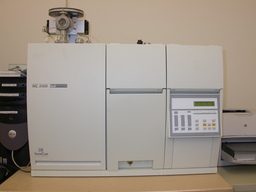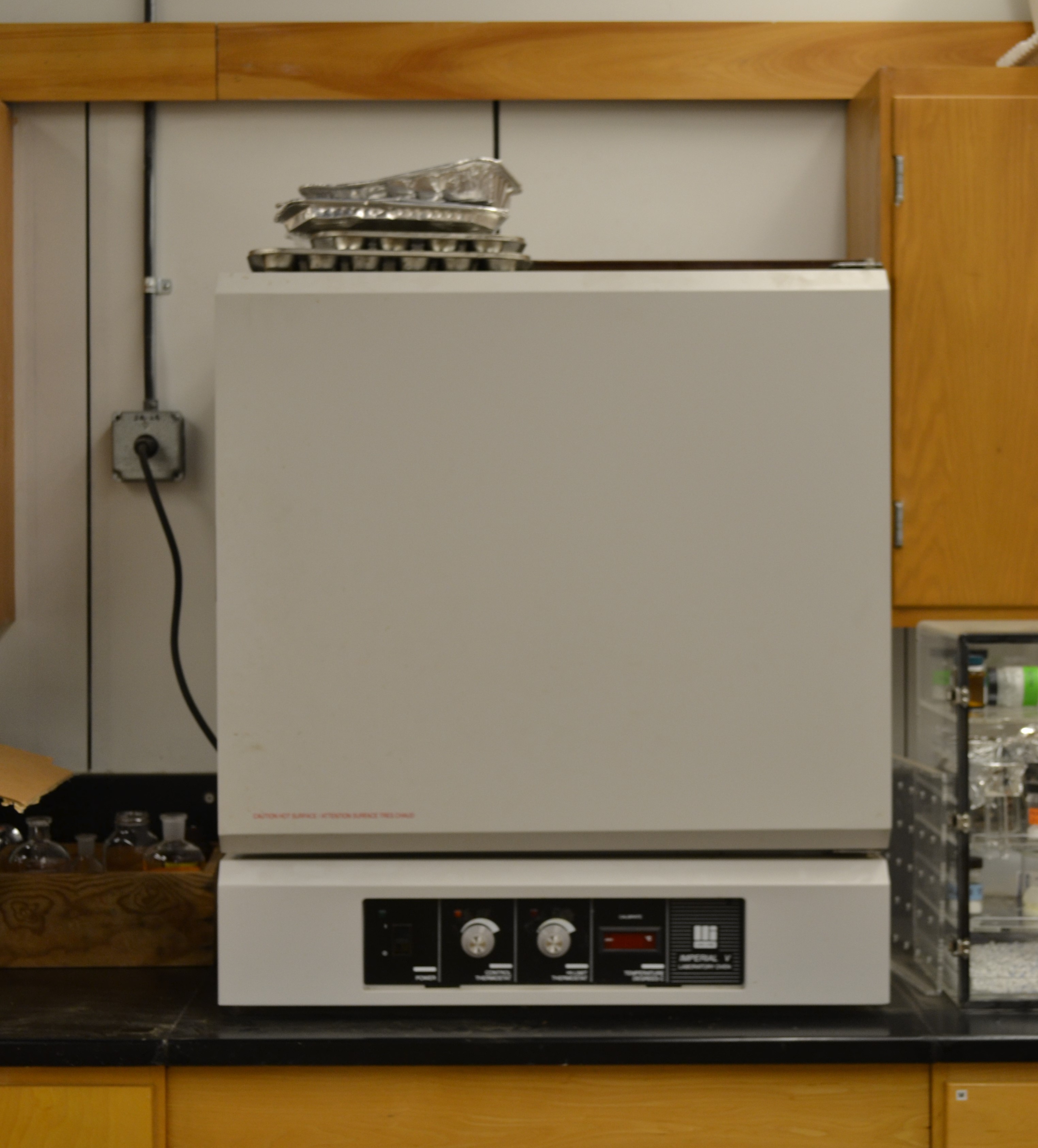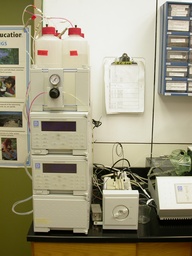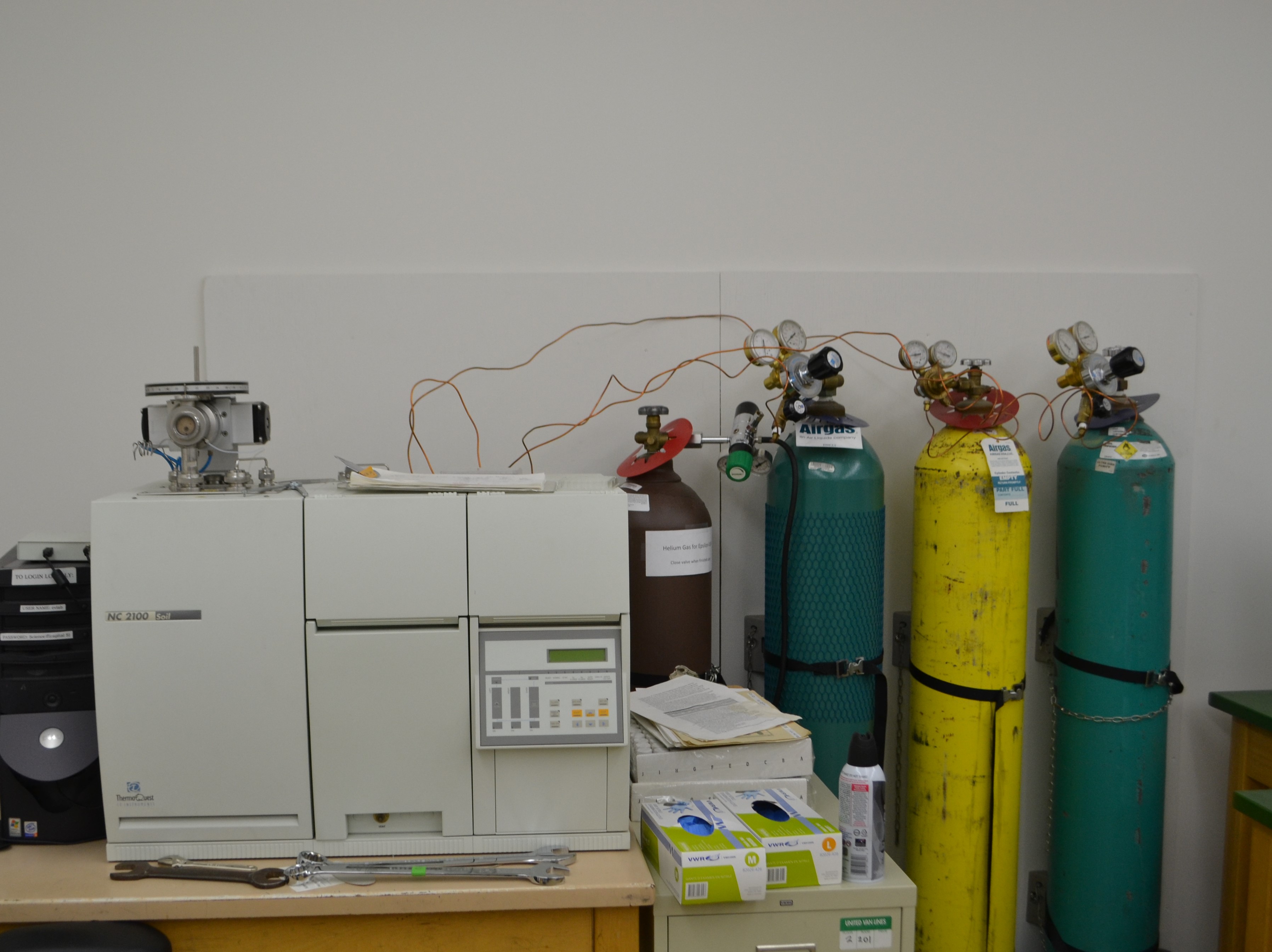Labs & Instruments
The Environmental Science laboratories provide innovative facilities for teaching and research at the Colorado College. The following information includes specific information regarding the primary instruments utilized in EV. If you'd like to use these instruments for your research or would like samples processed, please contact Darren Ceckanowicz. Funding for these facilities was generously provided by the Kresge Foundation.
Elemental analysis
 The ThermoQuest NC2100 measures the relative abundance of C, H, N, and S in environmental samples. The instrument combusts small samples (2-20 mg) in the presence of high-purity oxygen, oxidizes the combustion products in a chromium trioxide column, reduces the oxides with a reduced copper column, drys the sample via manganese perchlorate, separates the analysts with a chromatography column, then detects the separated components with a thermal conductivity detector. All analysts are passed through the system by ultra-high purity helium. In EV the instrument is primarily utilized to measure C/N ratios in soils and biological materials (aquatic insects, terrestrial plants, bone powders).
The ThermoQuest NC2100 measures the relative abundance of C, H, N, and S in environmental samples. The instrument combusts small samples (2-20 mg) in the presence of high-purity oxygen, oxidizes the combustion products in a chromium trioxide column, reduces the oxides with a reduced copper column, drys the sample via manganese perchlorate, separates the analysts with a chromatography column, then detects the separated components with a thermal conductivity detector. All analysts are passed through the system by ultra-high purity helium. In EV the instrument is primarily utilized to measure C/N ratios in soils and biological materials (aquatic insects, terrestrial plants, bone powders).
Ion Chromatography System
Soil Pulverizer
Shaker Table
Thermolyne Furnace 6000
Imperial V Lab Oven

NO2 Analyzer
XYZ Autosampler
SRI Gas Chromatograph
PANalytical Episolon 5 X-ray Integrated Anlaysis System
PANalytical X'Pert Pro X-ray Diffractometer
Ion analysis
 The Dionex IC determines the concentration of major ions in solution by ion chromatography, separating the primary anions and cations due to their relative affinity with an ion exchange resin. A small volume of solution is isolated by a multiport valve and carried to the column by an eluent. The ions are separated at high pressures and carried to a suppressor membrane, which eliminates the eluent conductivity by ion exchange across a porous membrane. The remaining analysts are then detected by an electrochemical detector. In EV the IC is used to determine major cation (K, Na, Mg, Ca) and anion (Cl, SO4, PO4, NO3, F, Br) concentrations in stream water and soil extracts.
The Dionex IC determines the concentration of major ions in solution by ion chromatography, separating the primary anions and cations due to their relative affinity with an ion exchange resin. A small volume of solution is isolated by a multiport valve and carried to the column by an eluent. The ions are separated at high pressures and carried to a suppressor membrane, which eliminates the eluent conductivity by ion exchange across a porous membrane. The remaining analysts are then detected by an electrochemical detector. In EV the IC is used to determine major cation (K, Na, Mg, Ca) and anion (Cl, SO4, PO4, NO3, F, Br) concentrations in stream water and soil extracts.
The Environmental Program recently acquired a new Waters Acquity Ultra Performance Liquid Chromatography system for the rapid analysis of polar organic compounds. This will be utilized by both EV and Chemistry faculty for both class experiments and their research programs. For example, Howard Drossman's Arctic soils study will be completed on this new instrument.



